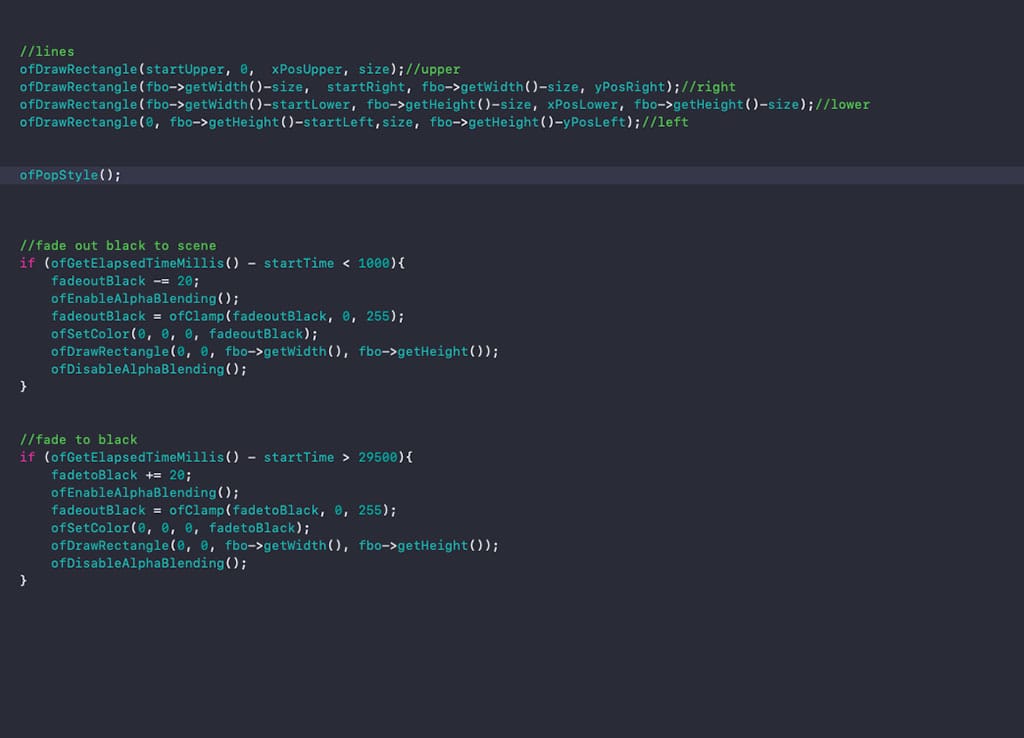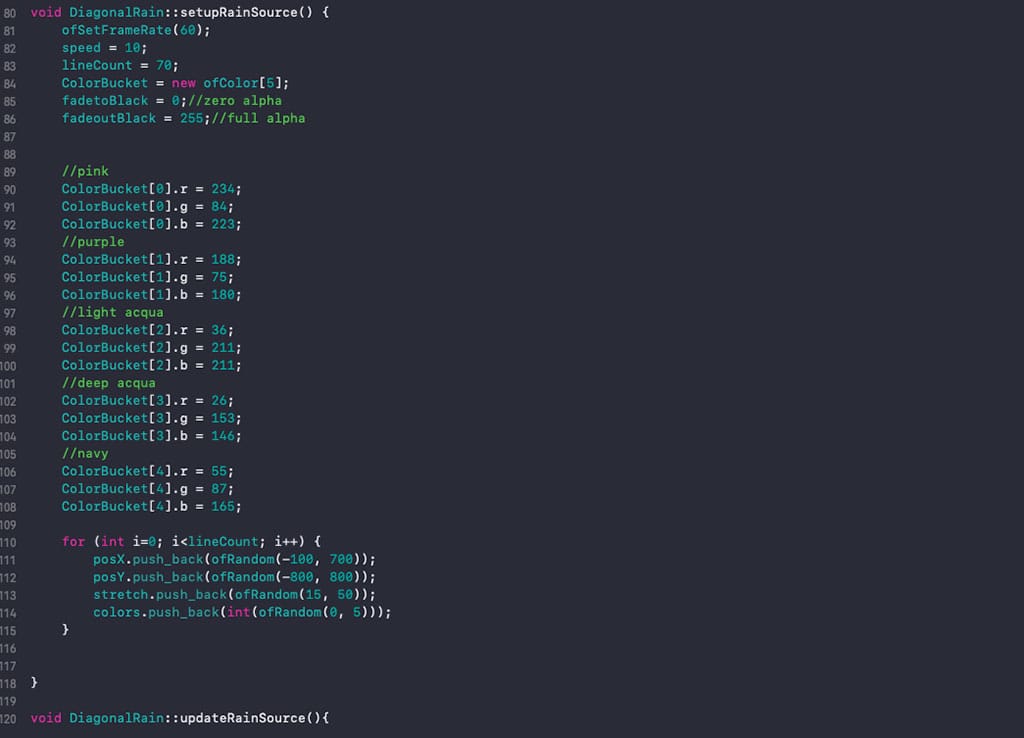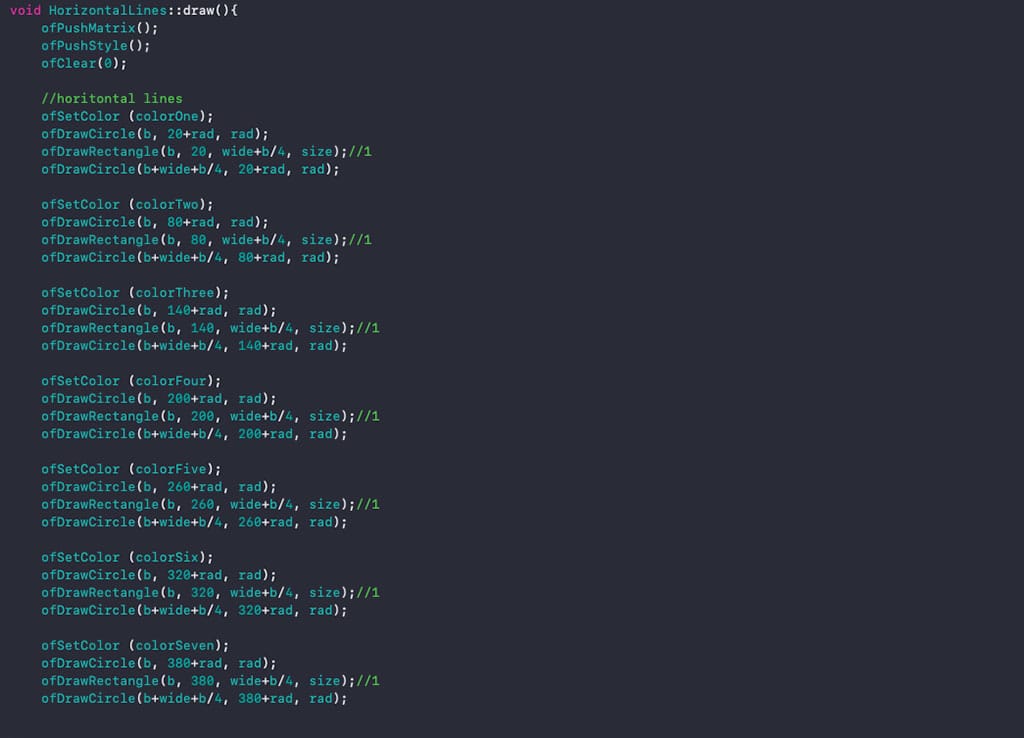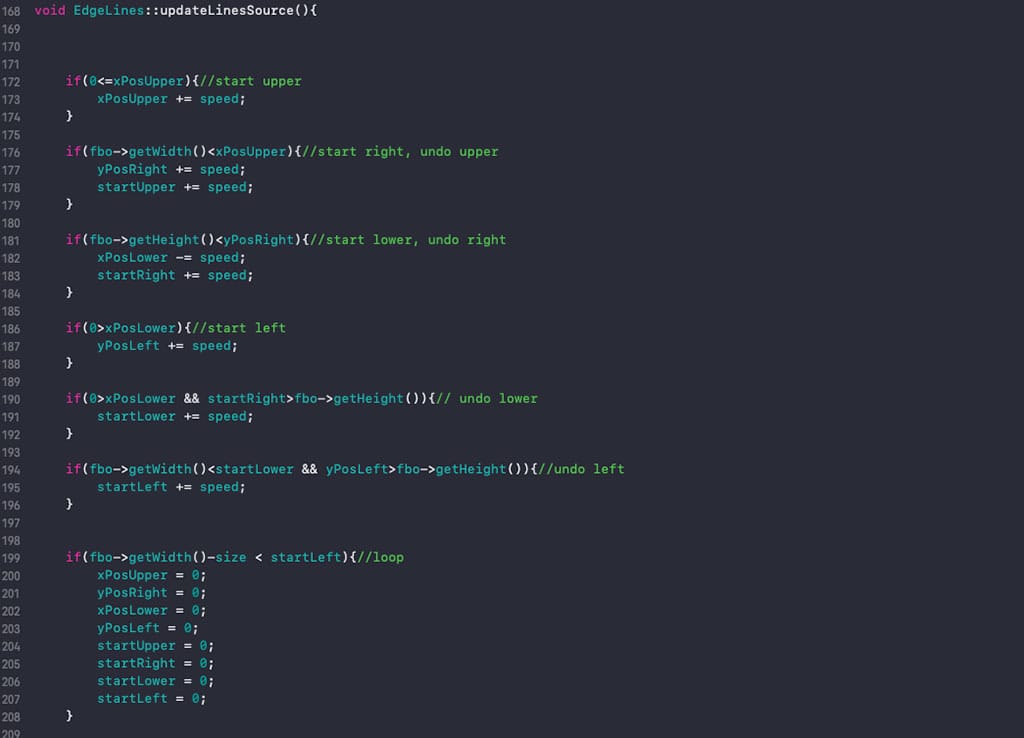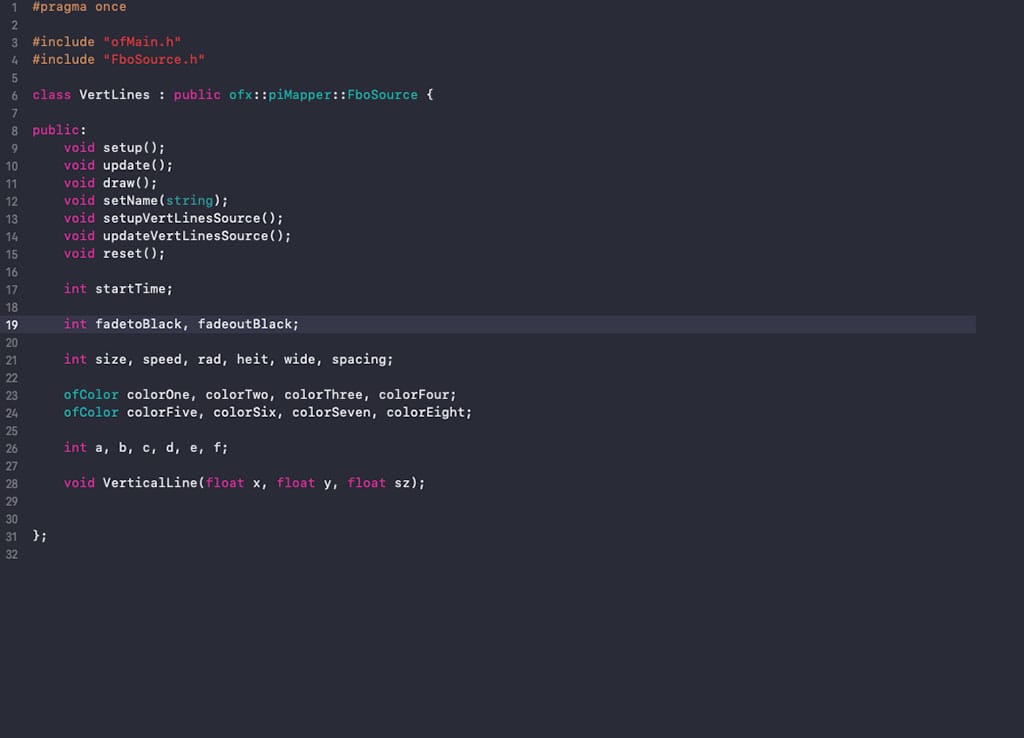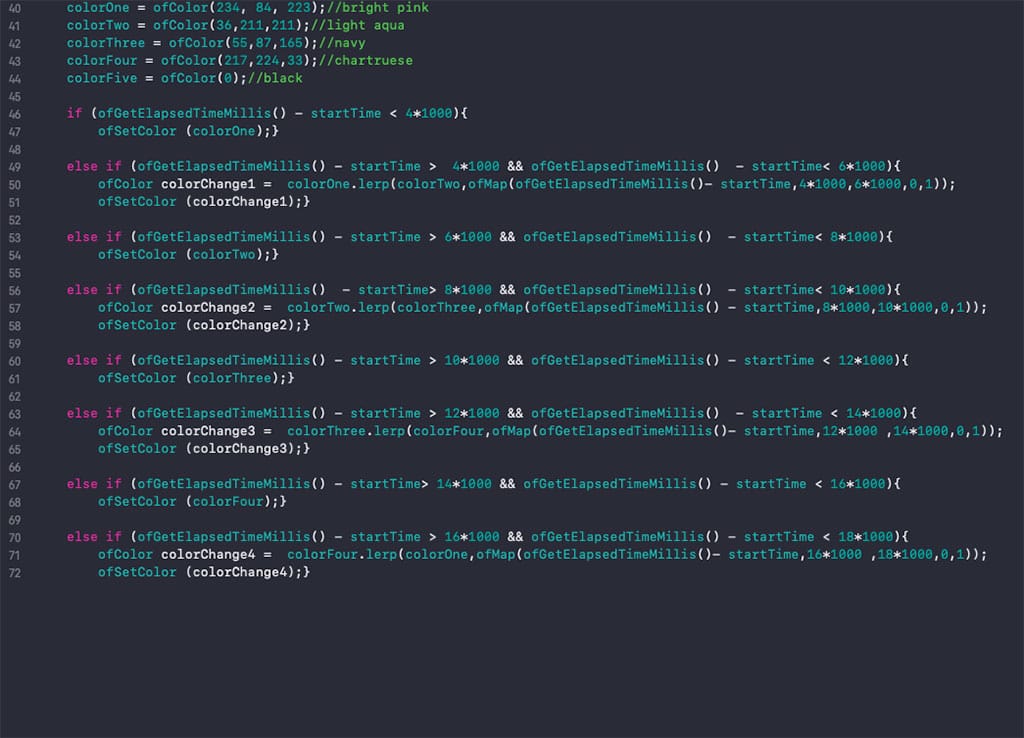Francesco Mori from 2016
Video projection mapping by Paul
3D Video Projection Mapping on Cubes with Quartz Composer by iasonf
Coming up with a color palette early in the process was helpful as it gave the project a sense of visual cohesion and a relationship between the scenes. openFrameworks has a ton of predefined colors which you can call by name in the code, but I wanted very specific colors so I defined my own. This was especially useful when I created a color vector for Scene 2 - Diagonal Rain.
I kept my code lean, my scenes organized, everything complied and ran as designed, and I pushed myself considerably. I don't think I could have worked harder on this project actually, which is a lesson in itself.
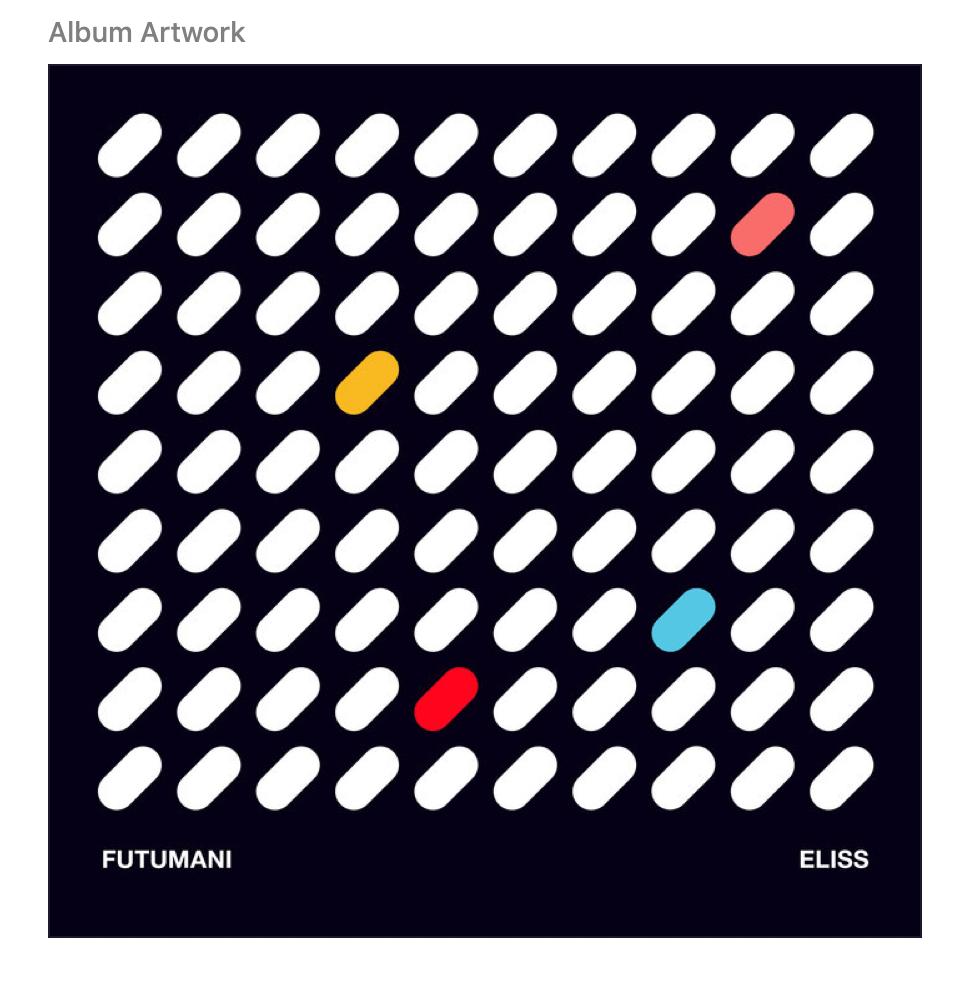
Scene 6 was designed and coded in Processing by Saskia Freeke. I love her work and was pleased that one of our assignments was to take one of her Processing projects and change the JAVA into C++.
In many ways I find coding in Processing easier and actually used it as a first step on the Diagonal Rain scene (scene 2). Many coders suggest manipulating other people’s code to make it your own but I found when I changed the circles to other shapes, that the intersections of the cube corners were less engaging. I changed the timing of Saskia's animation and colors slightly but I couldn’t bring myself to change her work too much. As I have five original scenes, I figured it was ok to include one Saskia scene.
I drew a ton of inspiration and guidance from the ofBook, Mastering openFrameworks: Creative Coding Demystified by Yanc Chris, and the openFrameworks course by Lewis Lepton.
